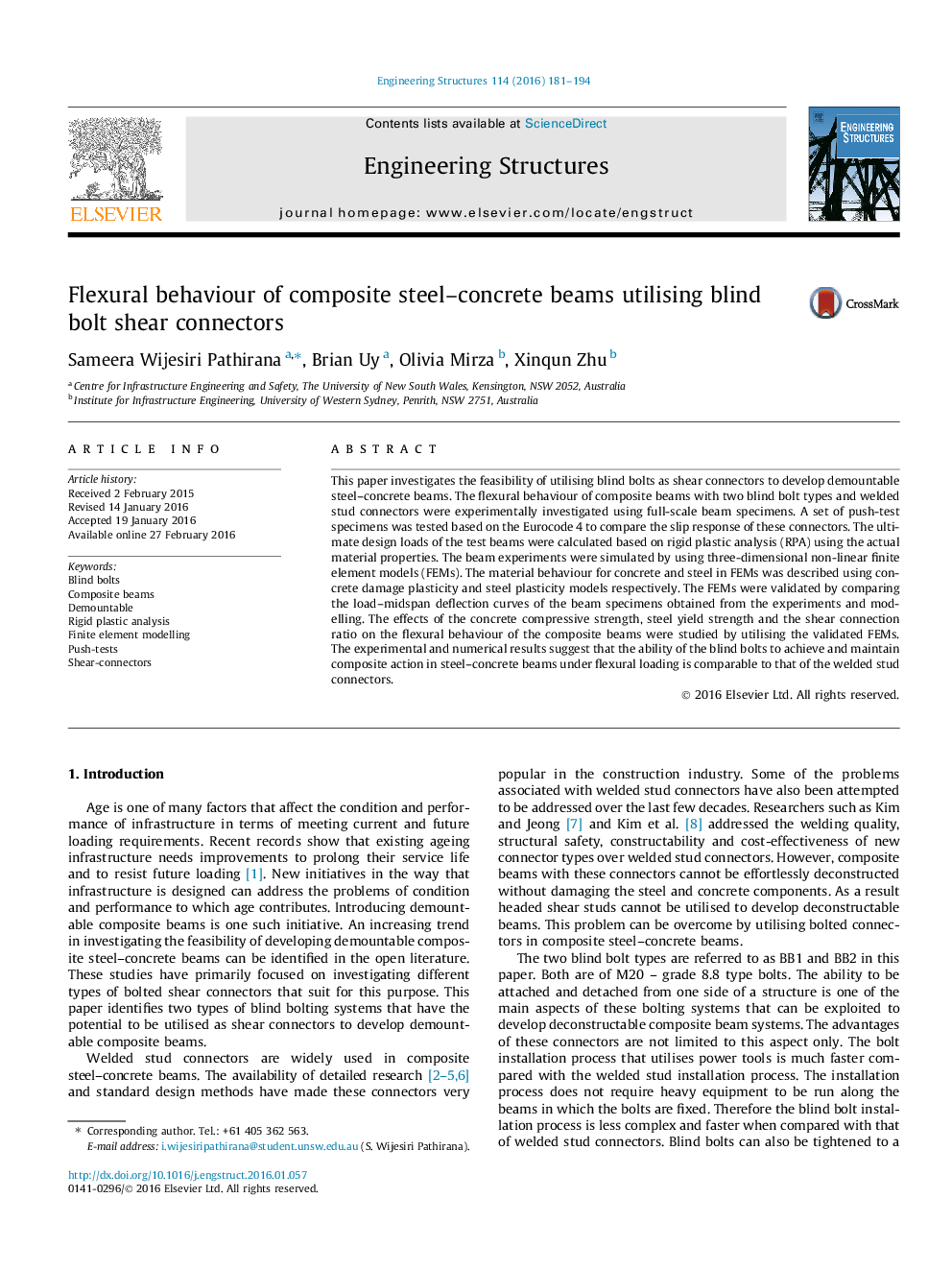| Article ID | Journal | Published Year | Pages | File Type |
|---|---|---|---|---|
| 265820 | Engineering Structures | 2016 | 14 Pages |
•Flexural behaviour of composite beams with blind bolts was tested experimentally.•Slip response of the connectors was compared by carrying out push-tests.•Beam experiments were simulated using 3D FEMs with Abaqus.•Effect of steel & concrete strength and shear connection ratio was checked.•Demountability of beams with blind bots were investigated.
This paper investigates the feasibility of utilising blind bolts as shear connectors to develop demountable steel–concrete beams. The flexural behaviour of composite beams with two blind bolt types and welded stud connectors were experimentally investigated using full-scale beam specimens. A set of push-test specimens was tested based on the Eurocode 4 to compare the slip response of these connectors. The ultimate design loads of the test beams were calculated based on rigid plastic analysis (RPA) using the actual material properties. The beam experiments were simulated by using three-dimensional non-linear finite element models (FEMs). The material behaviour for concrete and steel in FEMs was described using concrete damage plasticity and steel plasticity models respectively. The FEMs were validated by comparing the load–midspan deflection curves of the beam specimens obtained from the experiments and modelling. The effects of the concrete compressive strength, steel yield strength and the shear connection ratio on the flexural behaviour of the composite beams were studied by utilising the validated FEMs. The experimental and numerical results suggest that the ability of the blind bolts to achieve and maintain composite action in steel–concrete beams under flexural loading is comparable to that of the welded stud connectors.
